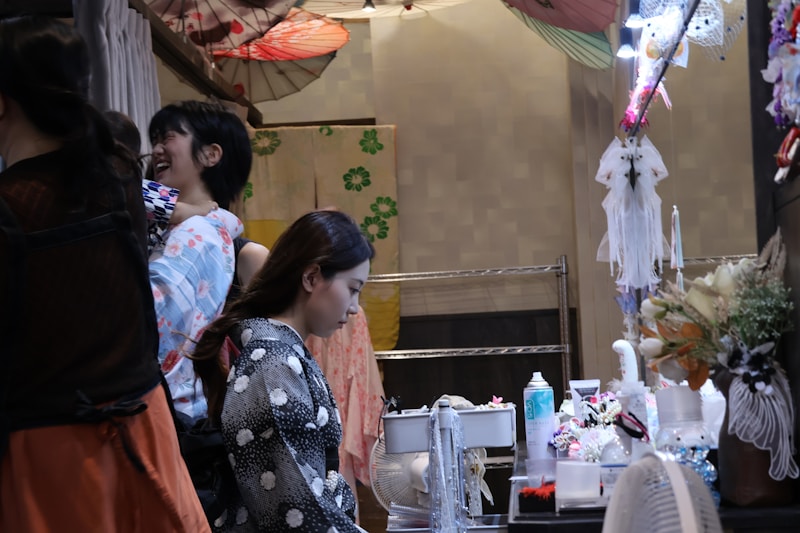Exploring Collective Memories in Fashion Choices: How Our Past Shapes Our Style
Exploring Collective Memories in Fashion Choices: How Our Past Shapes Our Style
Introduction
Fashion is not just about the latest trends; it is deeply intertwined with our collective memories. The choices we make in clothing often draw from shared experiences and cultural significances, reflecting the interconnectedness of society. In this article, we will delve into the concept of collective memories in fashion choices, exploring how nostalgia, historical events, and social movements influence our sartorial decisions.
The Concept of Collective Memory
Collective memory refers to how groups of people remember and share experiences that shape their identity. According to sociologist Maurice Halbwachs, these memories are crucial to the formation of a cultural identity. In the realm of fashion, collective memories can evoke emotions and convey messages that may not be apparent at first glance.
Nostalgia and Fashion
Nostalgia plays a significant role in our clothing choices. Many individuals find comfort in styles that remind them of past eras. For instance, the resurgence of 90s fashion, with high-waisted jeans and colorful windbreakers, showcases how nostalgic trends become prominent in contemporary wardrobes. This longing for the past influences designers and consumers alike, creating a cycle of revival and reinterpretation.
Historical Events and Fashion Trends
Historical events also leave an indelible mark on fashion. The post-war era saw a radical shift in women's clothing as they entered the workforce. Similarly, the civil rights movement brought forth new expressions of identity through clothing, with activists using fashion to challenge societal norms.
| Historical Event | Fashion Impact |
| World War II | Utilitarian styles emerged, women adopted trousers for factory work. |
| The 1960s Counterculture | Fashion became a form of protest, with bohemian and psychedelic influences. |
| 1990s Grunge Movement | Flannel shirts and combat boots represented rebellion and individuality. |
Regional Influences on Fashion Choices
Fashion choices are also influenced by regional collective memories. For example, in Japan, traditional clothing such as kimonos carry historical significance and are often worn during festivals. Similarly, in the United States, African American culture has profoundly shaped mainstream fashion, as hip-hop and streetwear styles have become deeply rooted in the fashion industry.

Fashion as a Form of Identity
Our clothing often serves as a canvas to express individual and collective identities. The way we dress can signal our beliefs, values, and affiliations. For instance, the LGBTQ+ community has utilized fashion as a means of visibility and empowerment, with events such as Pride Month showcasing vibrant colors and styles that celebrate diversity.
Impact of Social Media on Fashion Choices
In today's digital age, social media platforms have revolutionized how collective memories are shared and experienced. Influencers and fashion-forward individuals curate their feeds to reflect specific aesthetics, often drawing on nostalgic elements. The immediacy of social media allows for the rapid spread of trends rooted in collective memories, demonstrating how interconnected our fashion choices can be.
The Role of Fashion Designers
Fashion designers play a pivotal role in translating collective memories into wearable art. Iconic designers such as Ralph Lauren and Vivienne Westwood often draw inspiration from historical events and cultural movements, creating pieces that resonate on a deeper level. Their collections can evoke emotions and provoke thought, encouraging consumers to reflect on their own memories and identities.
Challenges in Navigating Collective Fashion Choices
While collective memories in fashion choices can unify communities, they can also pose challenges. Cultural appropriation is a significant issue where designers and brands borrow elements from marginalized cultures without proper acknowledgment or respect. It is crucial for consumers to engage critically with their fashion choices and understand the histories associated with specific styles.
A Questions to Ponder
1. How does your personal history shape your fashion choices?
2. Are there specific styles or trends that evoke strong memories for you?
3. How do you perceive the balance between trendiness and authenticity in fashion?
Conclusion
In conclusion, collective memories in fashion choices are a testament to the human experience. Our clothing not only reflects personal style but also serves as a narrative of our cultural identity and historical context. As we navigate the ever-changing landscape of fashion, it is essential to remain aware of these influences and make choices that honor our shared past. Embrace nostalgia, engage with history, and allow your fashion choices to tell your story.
Strongly consider the implications of your fashion decisions, and remember that every piece you wear has a story waiting to be told. Whether you draw inspiration from past decades or contemporary movements, your choices contribute to the vibrant tapestry of collective memory in fashion.
